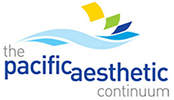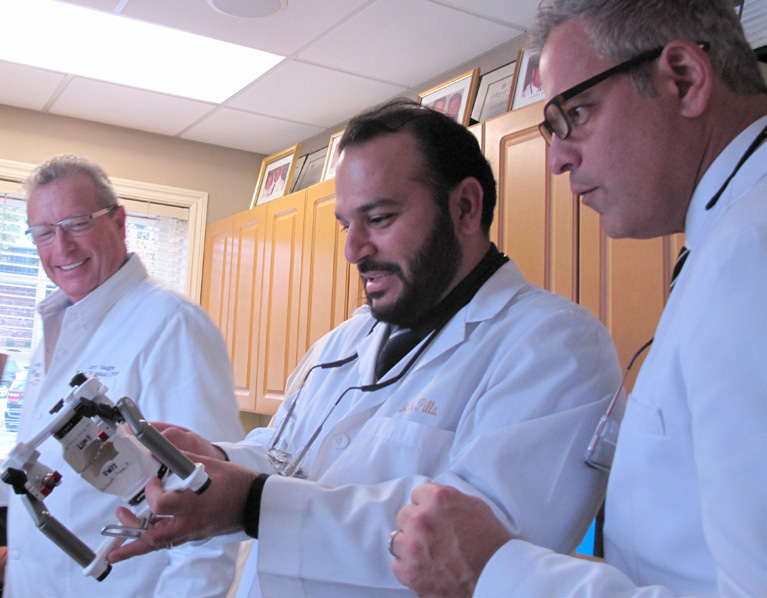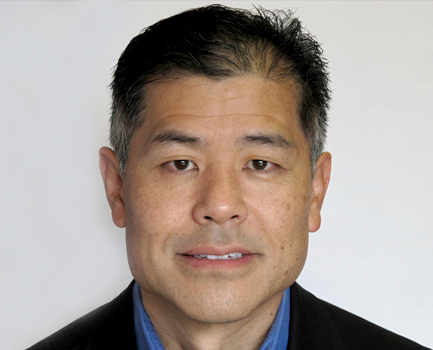
By Dr. Michael Miyasaki

Figure 1
This past month we held another live patient full-mouth restorative course in Detroit, and I was amazed once again at both the cognitive and clinical skills of the groups. I have had the privilege now of working with the groups in San Francisco, Chicago and Detroit. These groups have had the challenge of being thrown right into their full-mouth cases, and they rose to the task. I am

Figure 2
very proud of them and impressed by how their Program Directors, Dr. Samir Ayoub, Dr. Sheldon Seidman, and Dr. Robert DiPilla prepared their groups before the course. In the future the re-designed PAC curriculum will make the process more gradual and will transition from aesthetics to function in a sequenced natural progression. But even given that these groups had very little time to transition from the old to the new curriculum they performed amazingly well. Now we have all heard about courses that introduce occlusion. They are typically dogmatic and difficult. We threw out the dogma and took cases set-up in many different manners-bilateral manipulation, Kois deprogrammers, e-appliances, denture bites, Lucia jigs, anterior deprogrammers and others. These groups assimilated and applied the information quickly. We strove to understand our objectives and with their bite registrations discussed our goals which were:
- If needed, increase the vertical dimension of the worn dentition to restore the smile to the proper proportions
- Establish a stable bilateral joint position
- Establish a resting position and a path to-and-from closure that allows the muscles to remain relaxed
- Locate a terminal bite position that supports the aforementioned goals
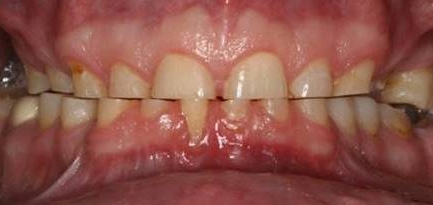
Figure 3
Another objective discussed was that this new occlusion should support the posture and airway of our patients. In the PAC programs we embraced all methods of occlusion, shared thoughts and then discussed the principles common to all. One part I emphasized was the need to allow for healing in our new bite position and to verify the stability of this position for a period of time before we proceed to what may be a porcelain makeover. It is much easier to adjust a splint or orthotic than a porcelain rehabilitation.
With this seasoned group we had many passionate discussions about determining the proper joint position and the bite. Another point we discussed was how to manage the case from
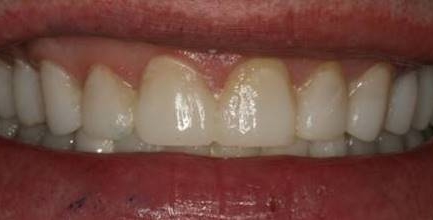
Figure 4
preparation to cementation with the laboratory, and with the precision of the cases it quickly became apparent to the doctors why they need
to use a laboratory such as Corr Dental Designs. The laboratory did a fantastic job creating the aesthetic restorations that were in the stable bite position, established pre-operatively, when all the teeth and their occlusal stops were prepared away, yes, 28 units at once. A case in point was that restored by Dr. David Campbell during the Detroit course. The following pictures show the dramatic change in the aesthetics combined with a comfortable bite position.

Figure 5
We look forward to having you join the PAC group, learn from the education and meet some of the talented doctors who have been able to do these cases. It is time to set the future of your practice to one of growth and excitement with passionate and compassionate colleagues. If you have questions or would like to send a case, please contact Gary Vaughn, CDT, CTO at [email protected] or 916-786-6740.
Figure 1: Dr. Krecht and Dr. DiPilla examine the mounted casts with Gary Vaughn, CDT, CTO before going in to prepare all the teeth at the first session-preparation.
Figure 2: Dr. DiPilla and Dr. Groth discuss the full-mouth cementation process at the second session-cementation.
Figure 3: Pre-operative photo showing signs of occlusal wear and aesthetic needs.

Figure 6
Figure 4: Patient in a fixed orthotic appliance to allow for healing and aesthetic evaluation.
Figure 5: Precision laboratory work will be the result of a proper wax-up.Figure 6: From the course Dr. David Campbell’s pre-op photo.
Figure 7: Dr. Campbell’s completed full-mouth case and lab work done by Corr Dental Designs.
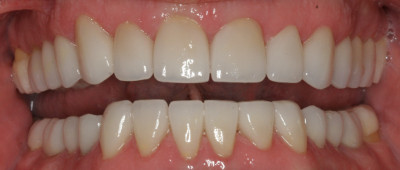
Figure 7
